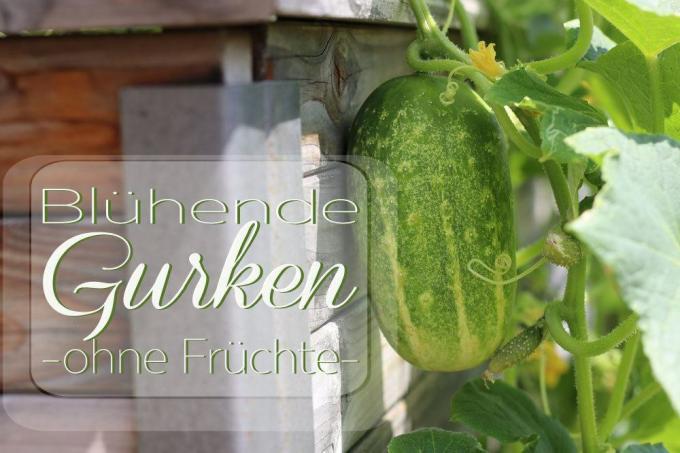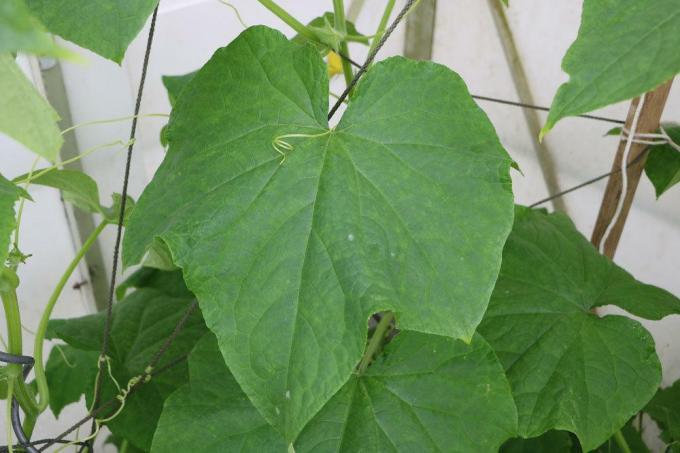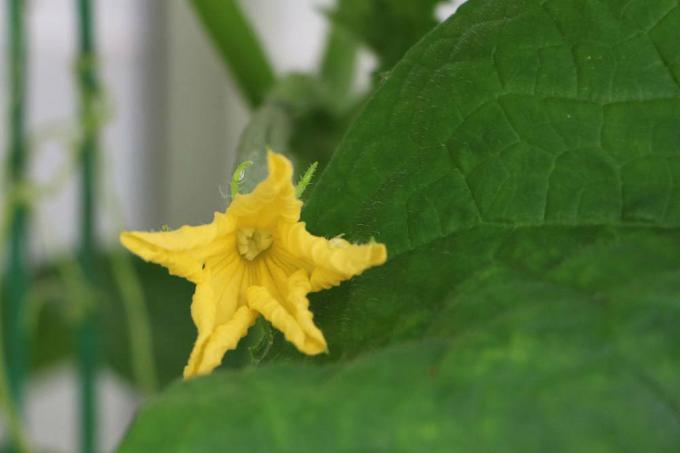
table of contents
- causes
- water
- temperature
- pollination
Cucumbers from the cucurbit family have been cultivated for more than 3000 years. Today they are among the most commonly grown vegetables. There are varieties that are grown exclusively outdoors and those that are mainly grown in the greenhouse. From a botanical point of view, cucumbers are a berry. They are cultivated on trellises or lying on the ground. Occasionally it can happen that cucumber plants bloom but do not develop fruits or repel them.
causes
water
Insufficient water supply as the cause
If cucumber plants bloom but do not develop fruit, this can be due, for example, to strong fluctuations in soil moisture or insufficient water supply. This happens especially when they suffer from drought stress during and shortly after flowering. Then it can happen that the plants reject the majority of the fruit sets, already existing young cucumbers die off or show deformities. This applies to free-range cucumbers as well as greenhouse cucumbers.
- Proper irrigation is essential for optimal growth and fruit formation
- Cucumbers have a very high demand for water
- they don't like waterlogging
- a larger amount of water is required every day
- Soil should always be evenly moist
- the daily water requirement of a single plant is up to three liters
- the irrigation water must not be too cold
- lukewarm water temperature optimal
- preferably use rainwater or stale water
Tip: When watering you should also make sure that the water is only poured onto the ground and not over the leaves. Otherwise, the moisture on the leaves could encourage bacterial or fungal attack.

temperature
Temperature fluctuations and lack of light
Other causes of missing fruit can be strong temperature fluctuations (heat or cold shock). In order to be able to bloom and later also develop cucumbers, warmth is essential. This starts with the sowing, for which a germination temperature of at least 20 degrees is required.
Glasshouse
In a heatable Glasshouse Young plants can be planted out as soon as the temperatures are around 15 or 16 degrees both during the day and at night. In unheated houses it is better to wait until after the ice saints. in the Outdoors it should be noted that the soil is already warm enough at the time of planting. It should be at least 18 degrees and a little cooler than the air temperature. For outdoor planting, it is best to choose a sunny location.
Deficiency symptoms
If there is no fruit formation despite flowering or if it is rejected prematurely, a Light-orNutritional deficiency and / or too high a salt concentration, due to Overfertilizationto be responsible for it. In such stressful situations, the plant tries to protect itself from overload. Healthy and well-developed plants often have a very high fruit set. Since a plant is not able to optimally supply too many cucumbers, it can happen that young fruit sets die.
pollination
Missing or fruitless pollination
Well-tried cucumber varieties are usually monoecious, i.e. there are both female and male flowers on one plant. In addition to the mixed varieties, the trade now also offers new varieties with predominantly female flowers. They are known as parthenocarp (virgin fruit) varieties. These cucumbers do not develop seeds, and most importantly, they do not get fertilized at all. They are therefore perfect for a greenhouse culture. Such varieties are sometimes also offered for outdoor cultivation.

pollination
In contrast to these modern cucumber varieties, parthenocarps are not dependent on pollinators for fruit formation. Insects take on this task outdoors, provided it is not too cool and too humid. Constantly cool and humid weather can sometimes lead to reduced fruit formation and consequently to crop losses, even in outdoor cultivation.
Pollination in the greenhouse
In the greenhouse, pollination, especially of non-parthenocarpic plants, is a bit more problematic. Here it is not enough to shake the plants more often. Leaving the door of the greenhouse open for a short time so that insects can fly in to pollinate is usually not enough. Then hand pollination may be advisable. In order for this form of pollination to be successful, it is first important to distinguish between male and female flowers. In the male flower only a simple stalk can be seen while in the female one can always see a small cucumber attachment.

Instructions for pollinating:
- the first flowers are usually male
- later, when the plants are stronger, females also develop
- on closer inspection, they can be recognized by their ovary
- now pollination can take place
- first cut off a male flower
- remove all petals from this flower
- all that remains is the stamp
- stroke the pistil over the stamens of the female flower
- pollination is now complete
Since cucumber plants keep sprouting new flowers in the course of their cultivation, this process must be repeated at regular intervals.



